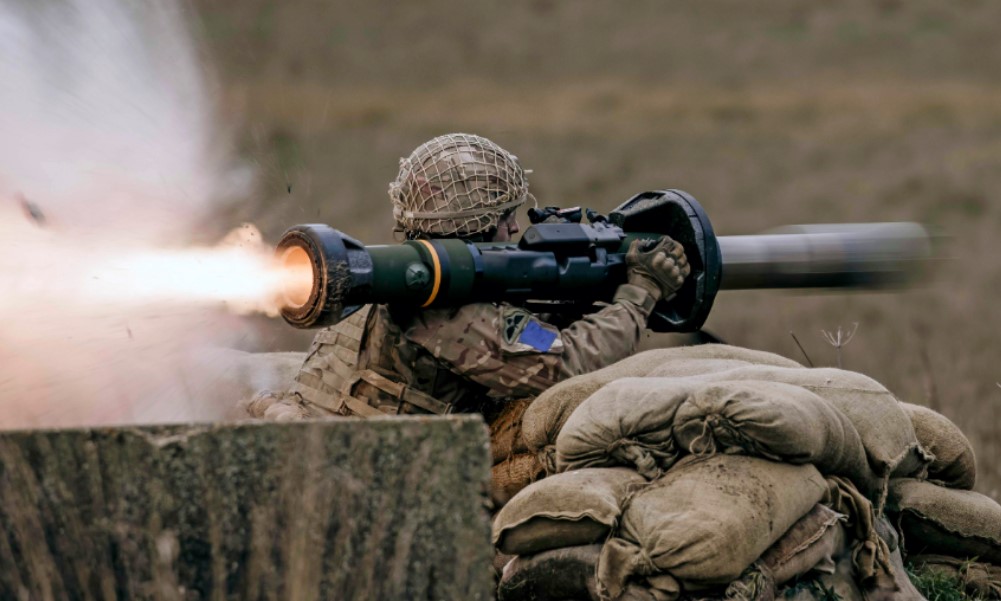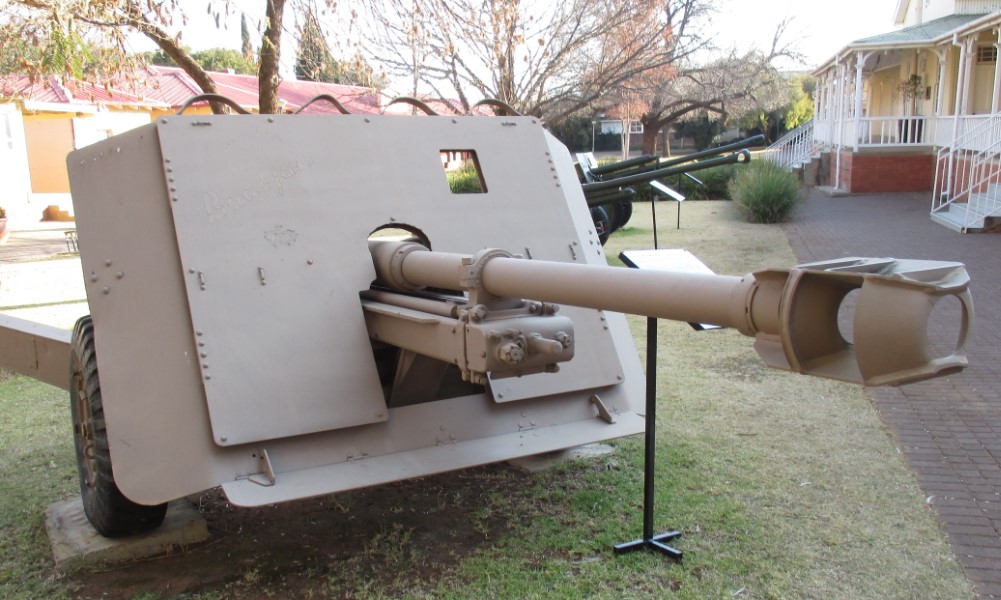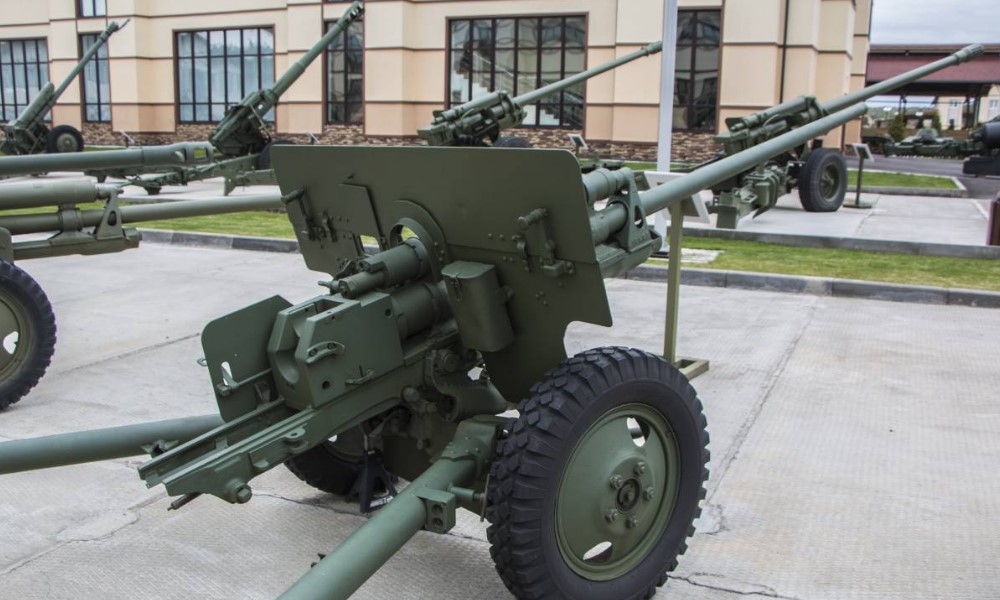Anti-tank gun technology has evolved significantly over the years, moving from rudimentary artillery systems to highly sophisticated weapons that utilize artificial intelligence (AI), smart munitions, and networked platforms. These modern systems are designed to neutralize heavily armored tanks, making them indispensable for contemporary military forces. This guide will provide a deep dive into the current advancements in anti-tank gun technology, real-world product examples, their benefits, and where to buy these high-end systems.
The Evolution of Anti-Tank Gun Technology

Historical Development
The development of anti-tank gun technology began during World War I when tanks were introduced as a new form of armored warfare. Early anti-tank weapons were rudimentary and relied on existing artillery pieces modified to penetrate the relatively thin armor of tanks at the time. These systems were typically cumbersome and limited in mobility.
As tank technology advanced in the interwar period and into World War II, anti-tank guns evolved significantly. During World War II, Germany’s 88mm Flak 36 became one of the most effective anti-tank guns, initially designed as anti-aircraft artillery but adapted to combat heavily armored Allied tanks like the Soviet T-34 and British Churchill. Anti-tank guns in this era became more specialized, with calibers increasing to defeat thicker and more angled armor.
Post-World War II saw a decline in traditional towed anti-tank guns due to the increased speed and firepower of tanks, alongside the development of guided missile technology. The introduction of rocket-propelled grenades (RPGs) and anti-tank guided missiles (ATGMs) such as the TOW and Javelin in the Cold War era shifted the focus from direct-fire artillery to more portable, accurate, and versatile systems. These weapons could be deployed by infantry and helicopters, offering greater flexibility on the battlefield.
By the 21st century, advancements in targeting systems, smart munitions, and AI-driven technologies further revolutionized anti-tank warfare. Modern anti-tank guns are now part of integrated systems that rely on real-time battlefield data and advanced sensors to neutralize threats efficiently.
Modern Advancements
Modern advancements in anti-tank gun technology have drastically improved its precision, effectiveness, and adaptability. Below are the key developments:
- AI-Driven Targeting Systems
Artificial intelligence (AI) has revolutionized how anti-tank weapons engage targets. AI-enabled systems can analyze battlefield conditions, track moving tanks, and autonomously lock onto targets with high precision. This reduces human error and allows for faster, more efficient strikes. AI-driven systems, such as those used in the Rheinmetall ADW, enable real-time data processing, allowing for better decision-making in complex combat environments. - Smart Munitions
Modern anti-tank munitions have become highly sophisticated. Smart munitions like top-attack projectiles can adjust their trajectory mid-flight and strike armored vehicles in their most vulnerable areas, such as the top armor. This drastically improves the kill probability and reduces the number of rounds needed to neutralize a threat. - Networked Platforms and Drone Integration
Anti-tank systems are increasingly integrated with broader military networks, allowing for real-time communication between drones, command centers, and ground units. Drones provide crucial reconnaissance, feeding live data to anti-tank operators, enabling them to engage targets from a safe distance while maintaining high accuracy. - Portable and Versatile Systems
Anti-tank weapons such as the Javelin and HJ-12 have been designed with portability in mind. These fire-and-forget systems allow infantry soldiers to carry and deploy anti-tank weapons quickly, providing greater flexibility on the battlefield.
Benefit of Anti-Tank Gun Technology

Modern anti-tank gun technology offers several critical advantages for military forces in both defensive and offensive operations. These benefits are a direct result of advancements in materials, design, targeting systems, and munitions.
- Enhanced Precision
One of the most significant benefits is the increased precision provided by AI-driven targeting systems and smart munitions. AI algorithms enable anti-tank guns to accurately track and engage moving targets with minimal human input, reducing the risk of missed shots. Additionally, smart munitions like top-attack projectiles adjust their trajectory mid-flight to hit the most vulnerable parts of enemy vehicles, improving the likelihood of a first-strike kill. - Improved Mobility and Flexibility
Portable anti-tank systems, such as the Javelin and HJ-12, allow infantry forces to deploy these weapons in a wide range of environments. Their lightweight design makes them highly maneuverable, enabling quick deployment in urban areas, forests, and rugged terrain. This mobility ensures that forces can respond to armored threats without needing heavy artillery. - Cost Efficiency
Modern anti-tank systems are designed to be cost-efficient in the long term. By utilizing advanced targeting and munitions, fewer rounds are needed to destroy enemy tanks, thereby reducing ammunition expenditure. Additionally, these systems can be reused multiple times in different combat scenarios, making them a more sustainable investment for military forces. - Adaptability in Multi-Domain Operations
Anti-tank systems like the Rheinmetall ADW are networked with drones and other systems, allowing for real-time data exchange. This adaptability ensures that anti-tank weapons can be deployed in rapidly changing combat scenarios, offering superior situational awareness and coordination.
Key Modern Anti-Tank Products

Let’s look at five leading anti-tank systems that represent the forefront of this technology.
1. Javelin Missile System
The Javelin is one of the most versatile and widely-used anti-tank systems. It was developed by Raytheon and Lockheed Martin and is known for its ease of use and high effectiveness. The Javelin employs fire-and-forget technology, meaning that once fired, the missile autonomously tracks its target using an infrared seeker. Its range is around 2,500 meters, making it highly effective in both urban and open-field combat scenarios.
- Key Features:
- Fire-and-forget technology
- Infrared guidance for all-weather use
- Portable design for infantry use
- Advantages:
- Easy to deploy and operate
- High hit probability even in complex environments
- Disadvantages:
- Shorter range compared to some vehicle-mounted systems
- Use Case: Ideal for infantry who need portable and reliable anti-tank capabilities.
Where to Buy: Available through Raytheon.
2. Rheinmetall Area Defense Weapon (ADW)
The Rheinmetall ADW represents a new class of anti-tank systems designed for multi-domain operations. This system utilizes a sensor-effector design, allowing it to detect, classify, and autonomously engage enemy targets. It uses smart submunitions to engage targets from above, focusing on areas of armor that are typically less protected.
- Key Features:
- Autonomous detection and engagement
- 360-degree situational awareness
- Top-attack munitions
- Advantages:
- High effectiveness against modern armored threats
- Minimal human input required during engagement
- Disadvantages:
- Expensive and requires specialized training
- Use Case: Best suited for defensive operations in critical areas, where rapid response to armored incursions is necessary.
Where to Buy: Visit Rheinmetall for more details.
3. HJ-12 (Red Arrow 12)
The HJ-12, developed by Norinco, is a portable, man-operated anti-tank missile system that uses infrared or TV guidance for targeting. It is designed to defeat tanks equipped with reactive armor. The HJ-12 has an operational range of up to 4,000 meters, depending on the variant, and can penetrate up to 1,100mm of armor.
- Key Features:
- Tandem HEAT warhead
- Fire-and-forget capability
- Day/night operation
- Advantages:
- Long range for a portable system
- High penetration capacity
- Disadvantages:
- Heavier than similar systems like the Javelin
- Use Case: Designed for both offensive and defensive scenarios where modern armored threats are present.
Where to Buy: Available through Norinco.
4. BGM-71 TOW Missile System
The BGM-71 TOW (Tube-launched, Optically-tracked, Wire-guided) is one of the most combat-proven anti-tank systems. The TOW 2B variant uses wireless guidance and is capable of engaging tanks from a range of up to 4,200 meters. The system is versatile, being mountable on a wide range of platforms, from infantry to vehicles and helicopters.
- Key Features:
- Wireless guidance
- Tandem warhead for increased armor penetration
- Multi-platform deployment
- Advantages:
- Long-range precision
- Proven effectiveness in numerous conflicts
- Disadvantages:
- Requires specialized training for operation
- Use Case: Ideal for use in both defensive and offensive operations where long-range engagements are necessary.
Where to Buy: Available from Raytheon Missile Systems.
5. Spike Missile System
Developed by Rafael Advanced Defense Systems, the Spike Missile is a highly versatile anti-tank system used by over 30 nations. The system can be deployed from infantry, vehicles, or helicopters, and its range extends up to 8,000 meters depending on the variant. The Spike uses optical and infrared guidance for pinpoint accuracy.
- Key Features:
- Long-range engagement
- Fire-and-forget and fire-and-update capabilities
- Multiple deployment platforms
- Advantages:
- Longest range of the systems mentioned
- Versatile deployment options
- Disadvantages:
- High cost due to its advanced features
- Use Case: Suitable for long-range operations where precision and versatility are critical.
Where to Buy: Available through Rafael Advanced Defense Systems.
Product Comparison Table
| Product | Range | Penetration | Advantages | Disadvantages | Price |
|---|---|---|---|---|---|
| Javelin | 2,500 meters | Tandem charge | Portable, fire-and-forget capability | Shorter range | $$ |
| Rheinmetall ADW | 100+ meters | Smart submunition | Autonomous operation, top-attack | Requires training | $$$$ |
| HJ-12 | 4,000 meters | 1,100mm armor | Long range, day/night operation | Heavier than others | $$$ |
| BGM-71 TOW | 4,200 meters | Tandem charge | Wireless guidance, versatile | Training required | $$$ |
| Spike | 8,000 meters | Tandem charge | Long-range, multiple platforms | Expensive | $$$$ |
Benefits of Modern Anti-Tank Technology
1. Increased Precision
With the integration of AI-driven targeting systems, modern anti-tank guns can engage targets with remarkable precision. This reduces collateral damage and improves the chances of a successful hit, even in complex combat environments.
2. Enhanced Mobility
Many anti-tank systems, such as the Javelin and HJ-12, are designed for portable infantry use, providing critical mobility. These systems can be carried by soldiers across difficult terrain and deployed quickly in response to armored threats.
3. Real-Time Data Exchange
Networked platforms like the Rheinmetall ADW enable real-time data sharing between different military assets. This improves battlefield coordination, allowing for faster and more accurate decision-making during engagements.
4. Cost Efficiency
While initial costs for advanced systems like the Spike or Rheinmetall ADW may be high, their effectiveness in reducing the need for multiple shots makes them, cost-efficientin combat situations by reducing the need for multiple shots. These systems can target and destroy enemy vehicles with high accuracy, reducing waste and resource depletion. Smart munitions, like those used by the ADW or Spike, enhance the overall efficiency of military operations by increasing first-shot hit probabilities and reducing the time needed to neutralize threats.
5. Strategic Flexibility
Modern anti-tank systems offer unmatched flexibility. Portable systems, such as the Javelin and HJ-12, can be deployed in various terrains and combat scenarios, while larger, vehicle-mounted systems provide broader area defense. Their adaptability to different environments—from urban settings to open fields—enhances their effectiveness and ensures that military forces can respond swiftly to armored threats.
Purchasing Anti-Tank Systems
Anti-tank systems are typically available through military procurement channels. Most of these products are sold to government bodies, defense contractors, and international militaries through official contracts or foreign military sales agreements. Here’s how and where you can purchase them:
- Javelin Missile System: Contact Raytheon Technologies for defense procurement inquiries.
- Rheinmetall ADW: Visit Rheinmetall for information on acquiring the ADW for military use.
- HJ-12 (Red Arrow 12): Contact Norinco to inquire about purchasing the HJ-12 system.
- BGM-71 TOW: Available for procurement through Raytheon Missile Systems.
- Spike Missile System: For details on purchasing the Spike system, visit Rafael Advanced Defense Systems.
FAQs
1. What is the most effective anti-tank missile system?
The Javelin is widely considered one of the most effective shoulder-fired anti-tank missile systems, particularly for infantry forces.
2. How does AI improve anti-tank technology?
AI enhances targeting systems by allowing for faster decision-making, more accurate engagement, and real-time analysis of battlefield conditions, significantly improving the effectiveness of anti-tank systems.
3. What is the benefit of smart munitions?
Smart munitions can adjust their flight path mid-air, ensuring a more precise hit on armored targets. This reduces the number of shots needed to neutralize a target and minimizes collateral damage.
4. Can anti-tank systems be used in urban environments?
Yes, systems like the Javelin and HJ-12 are designed for use in both urban and open-field environments, making them highly versatile.
5. How do I purchase anti-tank systems?
These systems are typically sold through government defense contracts. Reach out to the respective manufacturers or authorized defense contractors for information on acquisition processes.